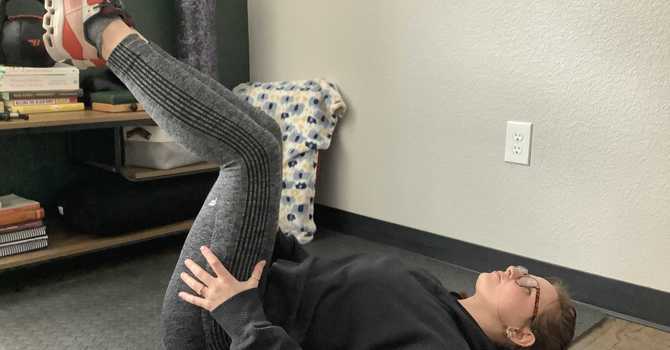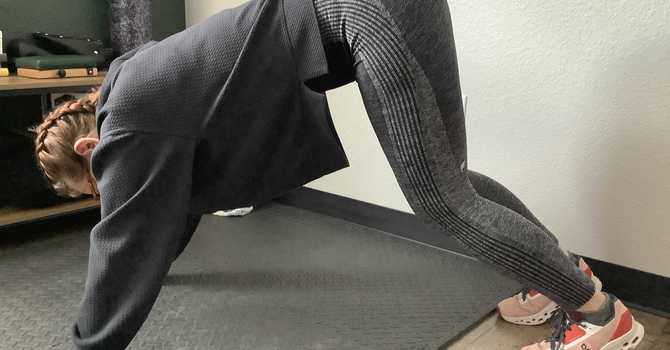
Tiger Woods has always been my favorite golfer.
The red polo on Sunday's and the seemingly highly competitive edge made him must-watch tv.
Over the last few years, we have seen Tiger slide from the tops of the golf rankings as he has battled multiple injuries. The injury most-often associated to Tiger at this point in his career is his low back injuries.
At the end of this blog, I've attached a video by The Evidence Based Chiropractor who details the injury Tiger endured as well as a description of the surgeries and repercussions of those surgeries on his low back.
Due to the pandemic, golf has recently become one of the few sports readily available for us to pick back up. Needless to say, courses are packed as people find sources of entertainment in the given times. That is why I thought it would be a good time to talk a little bit about golf and back pain.
Now, some of us may get some sort of stiffness/soreness after each round of golf while others may not experience much pain at all. Why is that?
Well, for starters, we recognize that every human isn't built exactly the same. We all have different anatomy, past experiences and injuries that can predispose us to injury. Secondly, the modern golf swing is a highly-complex movement that requires a great deal of mobility and strength from areas like the hips, thoracic spine and shoulders.
First off, I wanted to take a look at some of the research that has looked at the correlation between low back pain and golfing.
Hosea (1) and his fellow researchers were among the first to take a look at the different forces being applies to different areas of the spine during the golf swing. He found that at different phases of the swing, we produce different types and amounts of force to a given spinal joint.
This more modern swing that golfers are utilizing focuses on restricting pelvis turn while increasing thorax rotation during your back swing. The more upper thorax rotation you are able to achieve in relation to your pelvis, the higher the amount of elastic energy is stored in the muscles that rotate our thorax the opposite direction. This allows for a very powerful downswing. That downswing is most effective when creating a lateral shift in the pelvis (1).
Essentially, we create this powerful, asymmetrical motion pattern that we repeat many times throughout a round. Combine that with the amount of practice swings that a player is taking before a round and you have repeated this same motion pattern hundreds if not thousands of times throughout a week!
What does the research say about golfing and back pain? Well, while low back pain is THE MOST common complaint amongst golfers, (1) research is fairly undecided as to what the mechanism behind that injury is.
Some studies found that the activation of core muscles such as transversus abdominis and lumbar multifidus can play a role in those professional golfers with chronic low back pain.
Where does chiropractic come into play?
Biomechanically, golf places stress on our joints and muscles. As chiropractors, we specialize in getting the body to move more efficiently. In our office, we utilize spinal manipulation (adjustments) alongside other soft tissue release techniques like mechanical massage and instrument-assisted soft tissue mobilization to help improve mobility.
We also can help those areas that are moving too much. We have a variety of exercises we can utilize to help promote stability in those given areas. We look for the discrepencies in biomechanics and look to correct those through our various treatments.
Most golfers on the professional tour have various providers that they receive care from throughout a season. One of note are TPI-certified providers. TPI stands for Titleist Performance Institute, and it's a collection of healthcare providers who focus specifically on the care and performance of golf athletes.
While I don't currently have this TPI certification, it is something that I continue to research and implement into my treatments. At no point is anything cookie cutter in our office. It is something we say a lot because we want our patients to know that you are getting a treatment that is specific to YOU.
So, where does that leave us?
We know that low back pain is the most common complaint amongst professional golfers. While we aren't exactly sure as to the mechanism causing these injuries, we can infer that the golf swing has the ability to create some asymmetrical differences in our biomechanics.
As chiropractors, we are well fit to handle many issues relating to joint-related pain. Not only are we able to treat things like back and neck pain, but we can also treat and manage things like wrist and shoulder pain. That, alongside knee pain, are the most common complaints amongst professional golfers after low back pain.
Whether you're experiencing pain or not, stop by our offices to find out different ways we can help you and help make your golf game more enjoyable (no promises on less strokes, remember?). We have some excellent at-home stretches and exercises that you can incorporate into your warm-up.
Have a great week!
Dr. Zach
--
Resources:
Cole, M.H., Grimshaw, P.N. The Biomechanics of the Modern Golf Swing: Implications for Lower Back Injuries. Sports Med 46, 339–351 (2016). https://doi.org/10.1007/s40279-015-0429-1
Lindsey, D. Vandervoort, A. "Golf-Related Low Back Pain: A Review of Causative Factors and Prevention Strategies". Asian Journal of Sports Medicine. 20 June 2014.




